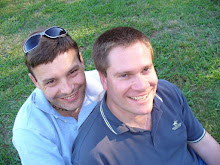Dean Keiller and I visited Bergen in August 1990 while backpacking in Europe. We added it to our itinerary after meeting one of its residents, a woman named Olga, while travelling in Eastern Europe. Olga insisted we visit her while regaling us with stories of Bergen’s natural beauty.
Unbeknownst to us, the Bergensbanen railway from Oslo to Bergen passes through one of the most breathtakingly scenic alpine landscapes in all of Europe - and that’s saying something! As you travel towards Bergen, the train steadily rises from the coast towards Hardangervidda, an expansive alpine plateau 1,237 metres above sea level. Apparently, the polar explorers Nansen, Amundsen and Shackleton once used the region as training grounds, due to its extreme conditions.
The photo above, pulled from the web, offers a glimpse of the spectacular Hardangervidda scenery. Sadly, I have no photos of my own to share. However, I made the following entry in my travel diary, which summed it up nicely. "Spectacular scenery - snow drifts, lakes, green and rocky valleys, waterfalls, tunnels and snowsheds."
Olga met us at the station and offered to take us to our accommodation. We explained that we had nothing booked. We asked if we could stop with her for a few days? She apologised that the tenancy by-laws in her building prevented her from hosting us. Apparently, habitation in her one-bedroom property was limited to a single person, and, as I recall, overnight guests were strictly prohibited. Instead, she invited us to join her for supper.
Olga lived on the top floor of a typical Norwegian weatherboard-clad apartment building. It had the cheapest rent because tenants had to climb three floors of stairs to reach the apartment. After enjoying a meal, she took pity on us and agreed to let us spend a night in her attic, accessible via a trapdoor. I must admit, Olga was quite stressed about us staying overnight.
The following night, to avoid further inconvenience, Dean and I trekked up the slopes of Fløyen, a hillside woodland overlooking the city, and surreptitiously pitched our tent in a discrete glade. However, it rained overnight, so Olga took pity on us once again. She kindly let us sleep a final night on her apartment floor, although she warned us more than once to be as quiet as possible. I must admit Olga’s paranoia about flouting her guest ban was a fascinating insight into the collegiate and law-abiding nature of Scandinavian people.
We also walked up Fløyen to soak in the city's stunning harbour from popular viewpoints along its gladed paths. The view very much reminded me of Wellington in New Zealand. After completing our outdoor trek, we ventured indoors with a visit to the Natural History Museum. The museum is renowned for its massive ceiling-mounted whale skeletons (the image below was pulled from the web). We finished the day with a night on the town, dining out with Olga and her friends.
Unfortunately, I don’t recall anything more from our time in Bergen, beyond its rather inclement weather. The photo opening this post, of Dean enjoying lunch by the harbour, kind of says it all really. The city was rather damp and generally lacked appeal for tourists passing through. Apparently, Norway is one of Europe’s wettest countries, and Bergen gets 200 days of rain annually.
After three nights in Bergen, Dean and I took an overnight train back to Oslo on 19 August. We then transferred onto a train bound for Trondheim, arriving back on the North Sea Coast mid-afternoon. However, Trondheim was merely an intermediary stop on our way north to experience life above the Arctic Circle. You can read more about this backpacking adventure here.
After three nights in Bergen, Dean and I took an overnight train back to Oslo on 19 August. We then transferred onto a train bound for Trondheim, arriving back on the North Sea Coast mid-afternoon. However, Trondheim was merely an intermediary stop on our way north to experience life above the Arctic Circle. You can read more about this backpacking adventure here.
Dean and I spent two nights in Trondheim on 20 and 21 August. We pitched our pup tent at the local campground overlooking Trondheim Fjord, a wide, fully enclosed harbour surrounded by verdant slopes. After settling into our campsite, we caught a bus into town. However, rather than exploring the city, we ended up spending our first afternoon at a table in Burger King planning the remainder of our Eurail itinerary.
Our second day in town involved more travel planning. We spent the morning booking tickets for the coastal ferry between Harstad and Bodo. Dean had heard positive stories about the Loften Islands, which could be reached by sea from Harstad. We decided it would also be an opportunity to experience some of Norway's majestic fjords.
Once our ferry tickets were sorted, the rest of the day was spent wandering through Trondheim's old town and along its waterfront lined with heritage buildings. Our time in Trondheim ended in spectacular style. As our bus returned to the campground, we witnessed a breathtaking sunset over the fjord. It was a truly memorable end to what had largely been a utilitarian stopover on our Eurail adventure.












No comments:
Post a Comment